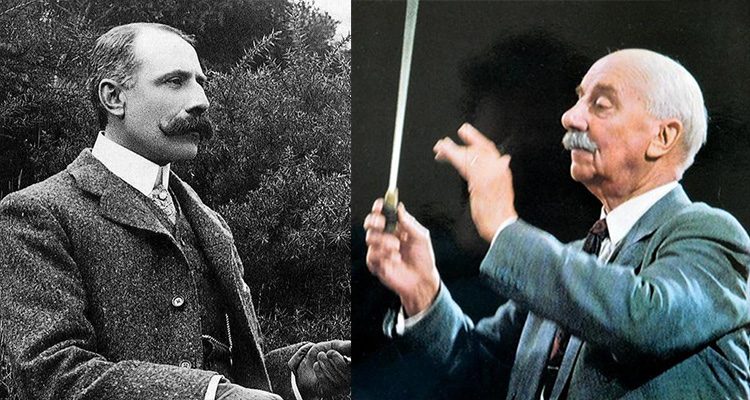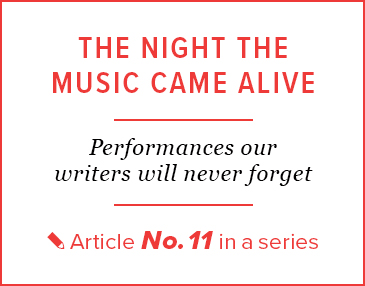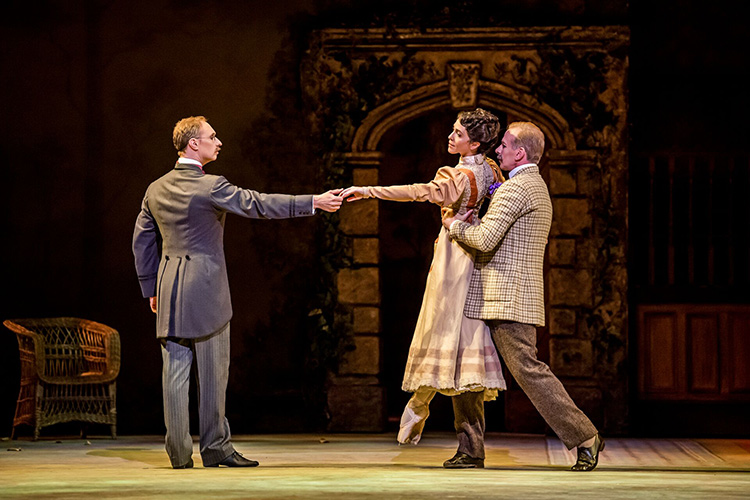ENTER YOUR EMAIL TO RECEIVE OUR WEEKLY NEWSLETTER
I’ll Never Forget … Edward Elgar’s Enigma Variations
A concert violist and pianist zeroes in on a beloved Late Romantic Era work, complete with 14 variations and an elusive theme
As reported by Veronica Leigh Jacobs to Linda Dyett

Composer and Conductor: Edward Elgar and Sir Adrian Boult.
 February 23, 2024
February 23, 2024
The London-born Veronica Leigh Jacobs is the first contributor to NYCitywoman’s Night the Music Came Alive series to lead a double-whammy life in music—as a violist and a pianist. No, wait—make that a twice-over double-whammy life: in orchestras and in chamber-music ensembles. Her father, Walter Leigh, who died in World War II, had been a promising composer who studied with Hindemith. After training at London’s Royal Academy of Music, Veronica joined the City of Birmingham Orchestra as a violist, then the Hallé Orchestra in Manchester, led by Sir John Barbirolli, who was also a cellist and a champion of the works of Edward Elgar. Later, she recorded with the BBC Radio Orchestra.
Marriage to an American psychiatrist and passionate amateur violinist in 1967 brought Veronica to New York, where she paused her career to raise two children, then taught music at schools including Nightingale-Bamford and Columbia Grammar, and gave private piano, violin, and viola lessons.
Asked to name the work that most captures her heart, Jacobs mulls things over for a matter of seconds before resolutely shaking her head with an emphatic “Yes—Elgar’s Enigma Variations. Very Romantic, very special—a most wonderful work,” adding, “I’d love to hear it again.”
She can, on her CD player with the Harman Kardon amplifier set up by her son-in-law. (The 1970 version with the London Symphony Orchestra conducted by Sir Adrian Boult is a favorite, perhaps representing the England Veronica left behind.) And readers, you can listen to it too, forthwith. Just click below.
As for how the Enigma Variations came to be, that involves a tale of connubial support. At home in the Malvern Hills in central England one evening in 1898, the 40-year-old Elgar, feeling dispirited over lack of recognition and funds, sat down at his piano and began doodling at the keyboard. His wife, Alice, heard him playing “something which had never been done before,” she is reported to have said. Encouraged, he began improvising. Result? Variations on an Original Theme, Opus 36, a.k.a. the Enigma Variations—widely regarded as the most significant orchestral work ever to emerge from Great Britain.
As for what’s enigmatic about this music, Elgar himself once explained that it’s not so much a riddle to be solved as it is a “dark saying [that] must be left unguessed,” expressing the “nothingness” from which it came.
Hmm, that doesn’t exactly crack this Enigma code. It remains a puzzle, consisting of 14 “musical miniatures,” as they’ve been called. But at least we know that each depicts the essence, as Elgar felt it, of a friend or confidant.
The perspicacious Mrs. Elgar rated a Variation, as did a certain country squire, the poet Matthew Arnold’s son Richard, and an Oxford classicist known to ring his bicycle bell nonstop whenever he rode around town. The plucked strings of the violins and the doublings of the woodwinds have been said to represent the clanging bell.
The most cherished of the 14 Variations may well be the “Nimrod,” its name cross-referencing the mighty hunter in the Book of Genesis and Elgar’s supportive and encouraging music publisher, August Jaeger, whose surname means “hunter” in German. The “Nimrod” Variation recalls, Elgar said, “a long summer-evening talk, when my friend discoursed eloquently on the slow movements of Beethoven, and said that no one could approach Beethoven at his best in this field, a view with which I cordially concurred.” Yet it’s been noted that the “Nimrod’s” opening bars recall Beethoven’s Pathétique piano sonata—a generous compliment and a salute, no doubt.

On her toes: Laura Morera (center) as Lady Elgar, the composer’s wife. Bennett Cartside (left) as A. E. Jaeger, a.k.a. “Nimrod”; Christopher Saunders (right) as Edward Elgar himself, in Frederick Ashton’s Enigma Variations, the Royal Ballet’s season 2019–20. Photograph by Tristan Kenton.
. . . . . . . . . . . . .
The Enigma Variations are given a whirl
“Should the opportunity arise, online or in live performance,” the NYCitywoman.com contributor and music and dance critic George Gelles advises readers “not to miss the choreographer Frederick Ashton’s inspired Enigma Variations setting created for the Royal Ballet in 1968. Reviewing that work in 2004 (“Life Steps: The Frederick Ashton Centennial” published in the August 2 issue), The New Yorker’s dance critic Joan Acocella wrote that the piece depicts, among others, ‘a number of central-casting English eccentrics running around in tweeds and brandishing ear trumpets.’ But tempering her snark, she continued, ‘the center of the piece is Elgar, and Ashton has fleshed out his portrait.’”
. . . . . . . . . . . . .











